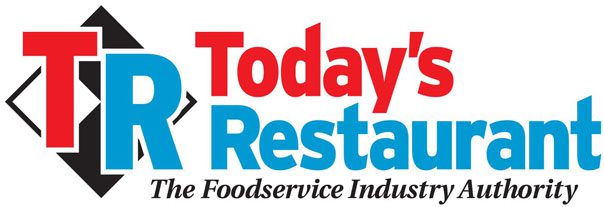
Things Are Looking Up for the Restaurant Industry
Some Challenges Remain: Technology Can Bridge the Gap
By Brian Duncan, President of me&u USA
The COVID-19 state of emergency has come to an end, and restaurant owners and operators are feeling optimistic about the possibilities that lie ahead. Industry projections are favorable, but challenges persist. The pandemic forced businesses to adopt technology they might otherwise have thought of as a luxury they couldn’t afford. Coming back from the brink, restaurants must fortify their defenses against a recession that has been waiting for its cue to storm the economic stage. QR scan-order-pay at-table ordering helps to reduce labor costs, facilitate operational efficiencies, boost profits, and strengthen staff and customer relationships.
The post-pandemic adjustment
The day came and went with little to no fanfare. The COVID-19 national and public health emergencies declared on March 13, 2020, ended quietly on May 11, 2023. Looking around, things look pretty much the way they did before the world suddenly shut down. A few souvenirs from the pandemic remain; The Bureau of Labor Statistics consumer price index reveals the purchasing power of one dollar in 2023 is only worth 85.470% of what it was in 2020. People with no history of social anxiety pre-pandemic are experiencing re-entry anxiety, trying to re-adapt to their school and work environments, hugs and handshakes, and social gatherings.
Dinner and drinks have always been at the top of the list of social activities people engage in after work, for a night out on the town, or to celebrate special events. But the restaurant industry was hit harder than most during the height of the pandemic. The National Restaurant Association reported that restaurant and food service sales dropped $240 billion below its 2020 pre-pandemic forecasts. Over 110,000 restaurants and bars closed their doors in 2020, either temporarily or permanently; 2.5 million restaurant industry jobs were wiped out; and at the close of 2020, sales volume was down to 2014 levels, setting the industry back by six years.
Cautiously optimistic
But here’s the good news. According to the 2023 State of the Restaurant Industry report, three out of four restaurant operators say business is returning to “a new, more positive normal.” Foodservice industry growth is projected to reach $997 billion in sales in 2023, partly due to inflation. The workforce is expected to grow by 500,000 jobs bringing the total industry employment level up to 15.5 million, surpassing pre-pandemic levels by the end of 2023.
It appears that dining out in the United States is back on top. In 2023, 34% of people in the U.S. say they visit casual dining restaurants at least once a week. Americans are spending $70.1 billion eating out each month, and the average household spends $3,008 each year ordering from a menu rather than rifling through the refrigerator.
However, 2 million jobs in the hospitality industry remain unfilled, and compounding inflation has added substantially to the cost of food, with 92% of restaurant operators reporting that higher food prices are a significant challenge. The restaurant industry is at the mercy of an unstable economy, always teetering on the edge of a recession that, in turn, affects the labor market, the supply chain, the cost of food and supplies, and wage increases.
Are discounts a do or a don’t?
Restaurateurs don’t want to drive away customers with higher menu prices. The hospitality industry is precisely what its name implies; it’s about providing a welcoming and friendly atmosphere, an escape from the everyday. But to keep the doors open, something’s gotta give.
Coupons and promotions seem like a good idea. The consensus from the experts is they are, they aren’t, they might be, and it depends. Some experts warn that promotions and coupons devalue the image of the restaurant. Without a careful strategy, customers may find price hikes followed by radical deals and discounts suspicious. Offering “perks” rather than incentives creates the impression of something offered as gratitude for a customer’s continued business rather than just trying to lure them in. Coupons can hurt the bottom line if the losses incurred don’t result in consistently higher traffic, repeat customers, and increased revenue.
Scan-order-pay at-table ordering
While industry projections favor an imminent boom in the restaurant workforce, it doesn’t help restaurateurs currently struggling to hire and retain staff. And predictions are nice, but the restaurant industry is at the whim of an uncertain future. In the meantime, restaurant operators have a few options; overwork their current staff, cut back on the quality of customer service, or adopt technology designed to improve efficiency, elevate the customer experience, and lighten the load for restaurant staff.
It’s an era of creative thinking, innovation, looking past obstacles, and inventing solutions. Smartphone technology has exceeded expectations as to its seemingly limitless possibilities. It’s almost an afterthought that the device can also be used to actually call someone. Currently, 6.92 billion people own a smartphone, more than 86% of the global population. And the technology spans generations; four out of five people over 60 own a smartphone and have an average of 25 installed apps.
QR code scan-order-pay utilizes technology that people already enjoy using and rely upon every day. Diners simply scan a QR code at their table with their smartphone, order from a dynamic, interactive, visual menu, and then pay with one click. Customers can browse the menu, click on food and beverage images for more details, and receive prompts, suggestions, and recommendations encouraging upsell ordering.
QR code technology eliminates human error and the ordering and payment friction points that arise from outdated, manual processes that can frustrate staff and guests. At-table ordering improves efficiency so that servers can cover larger sections and managers can maximize their current staff for more efficient operation and better flexibility. Waitstaff can focus on what they do best, engaging guests and creating a memorable dining experience.
The QR code table ordering menu and payment system helps create a unique and lasting connection between restaurants and guests, retain staff, and maximize efficiency. By leveraging technology, restaurant operators can work smarter, streamline operations, and maximize revenue.
About Brian Duncan, President of me&u USA
Brian Duncan is the President of me&u USA. With over a decade of leadership experience in hospitality, Brian is a veteran in the industry with an unrivalled resume that demonstrates disruption through technology. He holds a strong passion for the industry and is determined to build a better future for hospitality.
Founded in 2018 by Stevan Premutico, me&u is a leading global order & pay platform utilizing advanced features to drive success in hospitality businesses. Specializing in pubs and bars, me&u presents the smarter way to order and pay, using technology which allows restaurant patrons to view menus on their phones via a quick tap or scanning a QR code. They can then order and pay for food and drinks without needing a waiter or having to leave their seats.
The pandemic forced the hospitality industry to adopt smart technologies as tools for becoming sustainable ─ now business decisions are driven by data. Me&u opened the door for additional technology to solve many of the problems facing the hospitality industry. They have embraced the basic tenets of human behavior and are revolutionizing food and beverage venues. The next 10 years in hospitality will drive operators to adapt to changing human behaviors and marry that with technology…technology that enables hospitality success – but does not replace human interaction.
Me&u’s – meandu.com – growth has enabled expansion beyond their native Australia with operations in the U.K., New Zealand, and the U.S. Me&u now operates five entities in four countries and four currencies.
To read more great articles you can use, visit www.trnusa.com/blog




Recent Comments